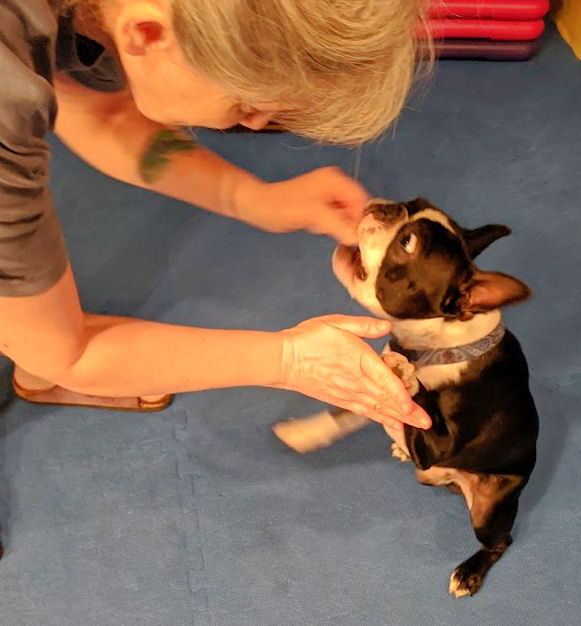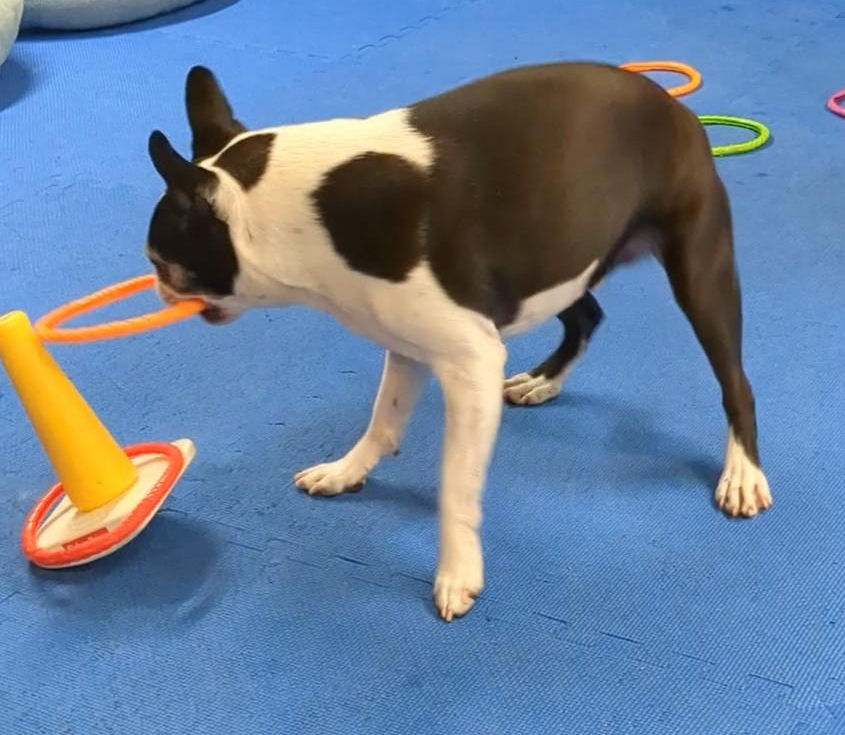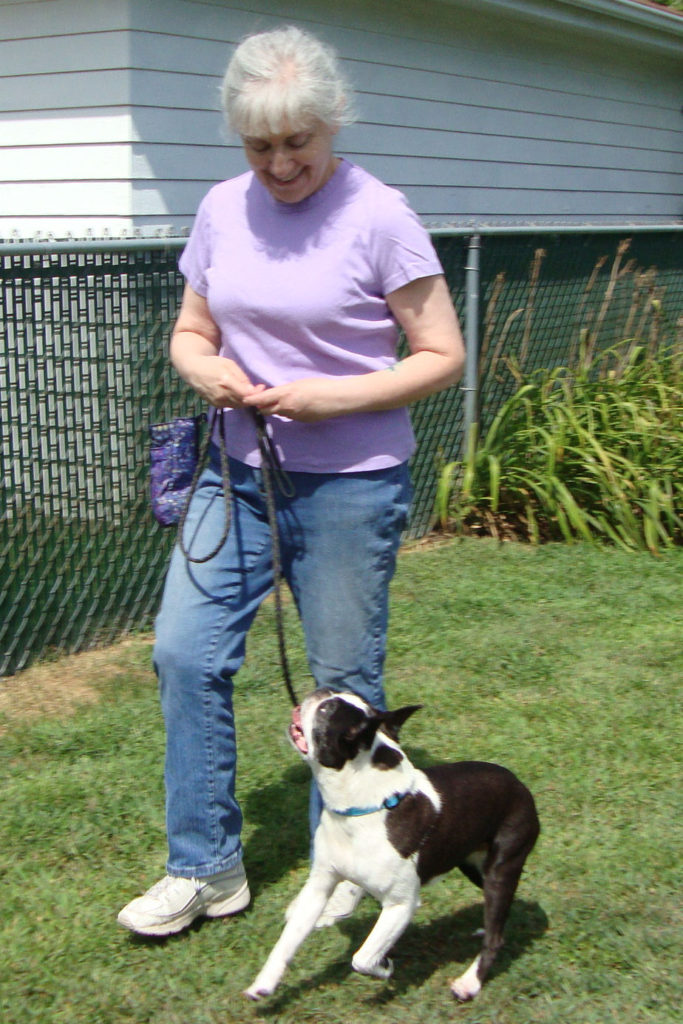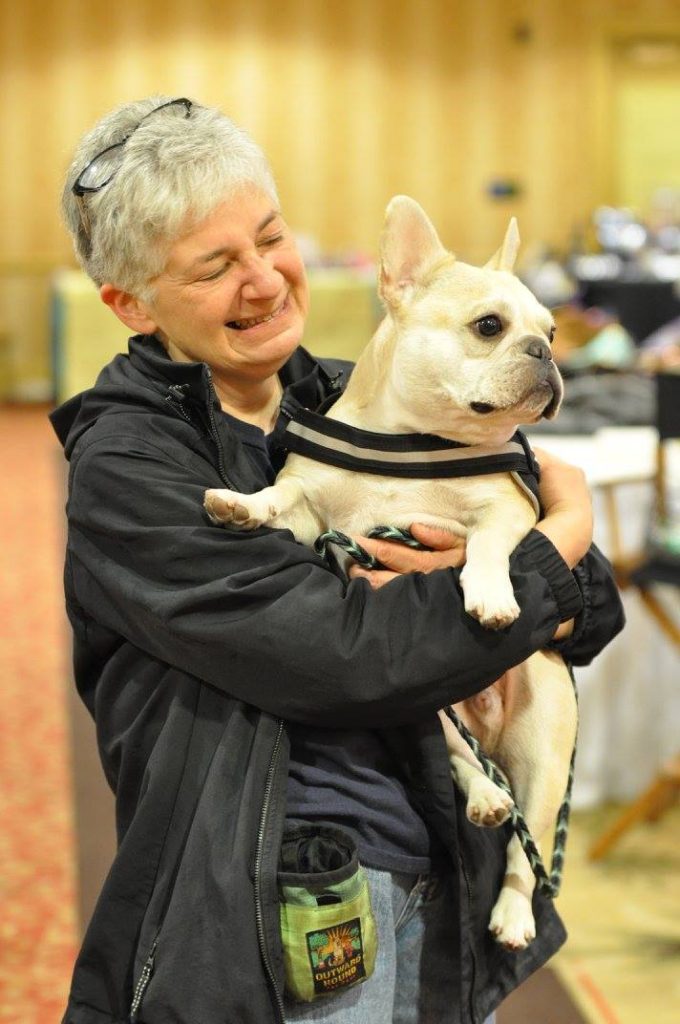We get asked all the time – “What are the best dog training treats?” or “What treats do you recommend for dog training?”
Like so many things in life, the answer is “It depends.” It depends on you, your dog, the resources available to you, your creativity, and flexibility. The only real rule is: Training treats should be soft, small, and smelly. Soft so you don’t leave crumbs all over. Small so your dog can swallow in one bite. And smelly so your dog’s irresistibly attracted to them.
Keep it special

One of our instructions for students in our classes is to bring lots of treats to dog training. And when they think they have enough for an hour-long class, double it. And we still always bring treats to supplement what they think is adequate.
We also recommend your dog’s training treats are something they absolutely adore. And that it’s reserved for training. If it’s saved for training games, it will enhance your dog’s eagerness to play with you.
Similarly, when you want your dog to love something, use that precious flavor bite. Our dogs adore peanut butter. We save it as a special treat they get only in their crates. As a result, when they see us getting out the peanut butter jar, they stampede to their crates. Don’t get in the way – they’ll run you over and not look back.
Your dog decides
Your dog’s tastes decide the best dog training treats. Some commonly used human-food choices are cheese and hot dogs. Others are pretty weird. We had a student who took “soft, small, and smelly” to the limit. She used defrosted little popcorn shrimp. It worked for her. She didn’t mind handling them, and her dog loved them.
We’ve had a weirdo or two ourselves. Hope’s first French Bulldog, Dax, wasn’t very motivated in training. Until, in desperation to get her to tug something, Hope used a limp stalk of celery. It worked – she tugged like a maniac and loved it.
It’s what your dog likes, and what you can handle, that decides on the best dog training treats. If your hands are always sweaty, or it’s hot where you live, cheese probably isn’t a good choice. If your dog has food sensitivities, only offer treats that you know won’t haunt you later.
It’s a snack, not a meal
Nutritional value may not be the primary consideration for training treats. Unless you’re in a class, you’re only playing training games for a couple minutes at a time. For those couple of minutes, it’s not awful to give your dog “junk food.” It’s a snack, not a meal. After all, we’re training for the real world, not a sterile space with no distractions.
The irresistible treats we bring to supplement our students’ supplies are the cheapest, nastiest, dog food nuggets we can find. We get “semi-moist” dog food that comes in plastic packets. It reeks of garlic (which dogs love), and is unnaturally bright red. And dogs absolutely adore it.
One of our students had stopped on the way to class and purchased high-quality, nutritious treats. His dog had absolutely no interest in that broccoli of dog treats. After one sniff of the “junk food,” he had his dog’s complete attention the rest of class.
Ideally, you’ll find the perfect blend of healthy and irresistible that works for your dog. Or you’ll mitigate the damage of junk food by making a “trail mix” of treats. Using a variety of treats and mixing them together is another way to keep your dog’s interest – they never know what the next morsel will be.



